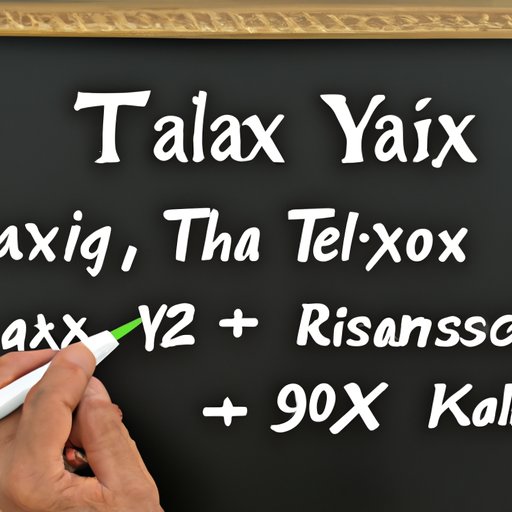Introduction to 401k Plans – Overview of the Basics
A 401k plan is a type of retirement savings plan offered by employers to their employees. Participants in a 401k plan are able to set aside pre-tax money from each paycheck into an individual account. The money saved in a 401k plan can then be used for retirement income or other financial goals. Understanding how a 401k plan works can help you maximize your retirement savings and reach your financial goals.
What is a 401k Plan?
A 401k plan is a type of retirement savings plan offered by employers to their employees. It allows employees to save for retirement on a pre-tax basis, which means that the amount of money that is contributed to the plan is deducted from the employee’s taxable income. This reduces the amount of taxes owed by the employee, allowing them to keep more of their money.
The money that is saved in a 401k plan is invested in a variety of assets such as stocks, bonds, mutual funds, and exchange-traded funds (ETFs). The rate of return on these investments will depend on the performance of the underlying assets. Over time, the value of the investments can increase significantly, allowing participants to accumulate significant retirement savings.
Eligibility Requirements for 401k Plans
In order to participate in a 401k plan, employees must meet certain eligibility requirements. Generally, an employee must be at least 21 years old and have worked for the company for at least one year. Some companies may also require that the employee work a minimum number of hours each week in order to be eligible for the plan.
Employers are also allowed to impose additional eligibility requirements, such as requiring employees to have a certain level of compensation in order to participate. Additionally, some employers may limit the amount of money that can be contributed to the plan.

Explaining How Contributions to a 401k Plan are Taxed
Pre-Tax Contributions
When an employee contributes money to a 401k plan, the contribution is made with pre-tax dollars. This means that the amount of the contribution is deducted from the employee’s taxable income before taxes are calculated. This reduces the amount of taxes that the employee owes and allows them to keep more of their money.
For example, if an employee earns $50,000 per year and contributes $5,000 to their 401k plan, their taxable income would be reduced to $45,000. This would result in a lower tax bill for the employee.
Post-Tax Contributions
In addition to pre-tax contributions, some employers also allow employees to make post-tax contributions to their 401k plan. Post-tax contributions are not deducted from the employee’s taxable income, but they are still eligible for tax-deferred growth. This means that the money will grow without being subject to taxes until it is withdrawn from the plan.
For example, if an employee earns $50,000 per year and contributes $5,000 to their 401k plan as a post-tax contribution, their taxable income would remain at $50,000. However, any growth that the money experiences while it is invested in the plan will not be subject to taxes until it is withdrawn.

Investing Strategies for a 401k Plan
Types of Investments Available
When investing in a 401k plan, participants have access to a wide variety of different types of investments. Common investments include stocks, bonds, mutual funds, and ETFs. Depending on the plan, participants may also be able to invest in real estate, commodities, and other alternative investments.
It is important to understand the different types of investments available in order to make informed decisions about how to invest your money. Each type of investment carries its own risks and rewards, so it is important to understand the potential risks and rewards of each type of investment before investing.
Asset Allocation Strategies
In addition to understanding the different types of investments available, it is also important to understand asset allocation strategies. Asset allocation is the process of deciding how much of each type of investment to hold in your portfolio. Different asset allocation strategies can be used to achieve different financial goals, so it is important to develop an appropriate asset allocation strategy that meets your needs.
For example, a conservative investor might choose to allocate a larger portion of their portfolio to fixed-income investments such as bonds, while a more aggressive investor might choose to allocate a larger portion of their portfolio to stocks. It is important to understand the different asset allocation strategies and find one that fits your risk tolerance and financial goals.
Understanding Employer Matching Contributions
What is an Employer Match?
Many employers offer an employer matching contribution to their employees’ 401k plans. This is a contribution that the employer makes to the employee’s 401k plan, usually based on a percentage of the employee’s contributions. For example, an employer may match 50% of the employee’s contributions up to a certain maximum amount.
The employer match is a great way for employees to get the most out of their 401k plan. Not only does it reduce the amount of money that the employee has to contribute, but it also increases the amount of money that is invested in the plan, resulting in greater potential returns.
How Does an Employer Match Work?
An employer match works by allowing the employer to contribute a certain amount of money to the employee’s 401k plan, usually based on a percentage of the employee’s contribution. For example, an employer may match 50% of the employee’s contribution up to a certain maximum amount. This means that if the employee contributes $1,000 to their 401k plan, the employer will contribute an additional $500.
It is important to understand how an employer match works in order to take full advantage of it. Some employers may require that the employee contribute a certain amount before the employer will make a matching contribution. Other employers may have a vesting schedule, meaning that the employer contributions become fully vested over time.

Choosing Beneficiaries for a 401k Plan
Who Can Be Named as a Beneficiary?
Participants in a 401k plan can name beneficiaries who will receive the balance of the plan after the participant’s death. Beneficiaries can be any person or organization, such as a spouse, child, friend, charity, or trust. It is important to select beneficiaries carefully, as the money in the plan will be distributed to the named beneficiaries upon the participant’s death.
It is important to update the beneficiaries on a regular basis to ensure that the money in the plan will go to the intended recipients. This is especially important if the participant’s circumstances change, such as getting married, having children, or divorcing.
How to Change or Update Beneficiaries
Changing or updating beneficiaries is typically done through the plan’s website or by filling out a form provided by the plan administrator. Once the form is completed, it should be returned to the plan administrator. It is important to keep copies of all forms for your records.
It is also important to remember that the beneficiary designations on file with the plan administrator are considered legal documents. As such, it is important to make sure that they are accurate and up to date. If there are any changes, they should be reported to the plan administrator as soon as possible.
Pros and Cons of Participating in a 401k Plan
Advantages of a 401k Plan
One of the biggest advantages of participating in a 401k plan is the tax savings. Contributions to the plan are made with pre-tax dollars, which reduces the amount of taxes owed by the participant. Additionally, any earnings on the investments in the plan are not taxed until the money is withdrawn from the plan.
Another advantage of a 401k plan is the potential for employer matching contributions. Many employers offer matching contributions to their employees’ 401k plans, which can help to significantly boost the amount of money in the plan. This can be a great way to maximize your retirement savings.
Disadvantages of a 401k Plan
One of the drawbacks of a 401k plan is that the money in the plan is subject to market volatility. This means that the value of the investments can decrease if the stock market or other markets experience a downturn. Additionally, 401k plans are subject to fees and expenses, which can reduce the amount of money in the plan.
Another disadvantage of a 401k plan is that the money in the plan cannot be accessed until the participant reaches age 59 ½, unless the participant takes a hardship withdrawal. This means that the money in the plan cannot be used for short-term goals or emergencies.
Conclusion
A 401k plan is a great way to save for retirement and other financial goals. Understanding how a 401k plan works can help you make the most of the plan and maximize your retirement savings. Eligibility requirements, taxation, investment strategies, employer matching contributions, and beneficiary designation are all important aspects of a 401k plan that should be understood before participating.
(Note: Is this article not meeting your expectations? Do you have knowledge or insights to share? Unlock new opportunities and expand your reach by joining our authors team. Click Registration to join us and share your expertise with our readers.)
